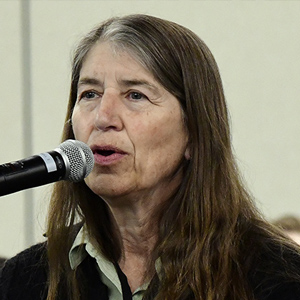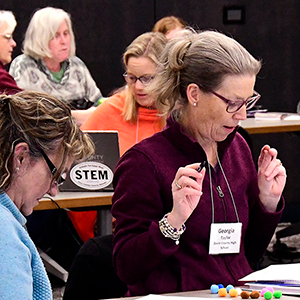Engaging directly with individuals with autism is crucial to advancing scientific research, according to Eric Garcia, who spoke at NIEHS April 11 in recognition of National Autism Acceptance Month. Garcia is the author of “We’re Not Broken: Changing the Autism Conversation.”
Autism, or autism spectrum disorder, is a broad range of complex conditions affecting communication and behavior. Research shows that both genetic and environmental factors likely play a role in the disorder, which usually presents in children by age 2.
“Not including autistic people in conversations has led to various negative consequences,” Garcia said. “These include the promotion of misinformation and the allocation of resources to areas that either did not directly benefit autistic people or were long-term investments that failed to address their day-to-day needs.”

This perspective is what led NIEHS event organizers Cindy Lawler, Ph.D., Amanda Garton, and Astrid Haugen to invite Garcia to speak at the institute.
“While the topic of the talk was different than our usual focus on the science of autism, we were committed to highlighting the importance of engaging autistic people meaningfully,” said Lawler, who leads the NIEHS Genes, Environment, and Health Branch. “Garcia showed how our assumptions are often wrong — or at best misleading — and can lead to negative consequences for people with autism.”
Learning from the past
For Garcia, the current tendency to omit people with autism from discussions about them can be traced to the seminal work of Austrian-American psychiatrist Leo Kanner. In 1943, Kanner claimed — based on his interactions with one patient — that children with autism needed to be institutionalized because they were unable to form social connections.
“We now know the patient went on to live a free and autonomous life, he was loved, he had friends, he had a job,” Garcia explained. “I tell this story because the patient was literally the first known autistic person, yet even then it demonstrates the mistakes doctors made in failing to actually listen to the patient they were diagnosing.”
Toward a more inclusive approach
In Garcia’s view, listening to people with autism can improve scientific research designed to explore possible causes of, and therapies for, the disorder. In particular, he advocates for working with autistic people directly to identify issues that matter most to them, such as developing better support services and identifying ways to lengthen lifespan.
“Scientific research, including research on biology, can be incredibly beneficial for autistic people, but it must include input from the community to hear their most pressing concerns,” Garcia said. “We need to address the autistic people who are in the room right now and figure out ways to improve outcomes in their daily lives.”

In Garcia’s view, the best way of ensuring that autistic voices are heard is to include them at every stage in the research process — from priority setting at the national level to initial design of individual studies to reporting back results.
The Academic Autism Spectrum Partnership in Research and Education is a model for bringing together autistic individuals with researchers in community-based participatory research projects. The Interagency Autism Coordinating Committee (IACC) is a federal advisory committee that includes autistic members and many federal partners, such as NIEHS. The IACC works together to develop and annually update a Strategic Plan for Autism Research, Services, and Policy. The evolution of this plan over the past 15 years reflects input from the broader community about needs for research and services related to adults, transition-age youth, and co-occurring conditions.
The most important first step, according to Garcia: Making scientists aware that including autistic perspectives in research holds value.
Additional resources:
For more information about autism, visit this NIEHS webpage. Also learn what NIEHS is doing to support autism research.
(Ben Richardson, Ph.D., is a Presidential Management Fellow in the NIEHS Office of Communications and Public Liaison.)









